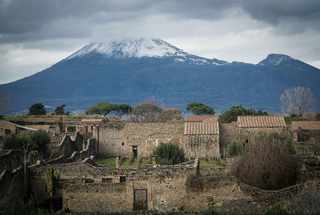When Mount Vesuvius erupted in A.D. 79, the volcano's molten rock, scorching debris and poisonous gases killed nearly 2,000 people in the nearby ancient Italian cities of Pompeii and Herculaneum.
But not everyone died. So, where did the refugees, who couldn't return to their ash-filled homes, go?
Given that this was the ancient world, they didn't travel far. Most stayed along the southern Italian coast, resettling in the communities of Cumae, Naples, Ostia and Puteoli, according to a new study that will be published this spring in the journal Analecta Romana. [Preserved Pompeii: A City in Ash]
Pinpointing the refugees' destinations was a huge undertaking, as historical records are spotty and scattered, said study researcher Steven Tuck, a professor and chair of classics at Miami University in Oxford, Ohio. To determine where people went, he devised several criteria to look for while combing through the historical record, which included documents, inscriptions, artifacts and ancient infrastructure.





